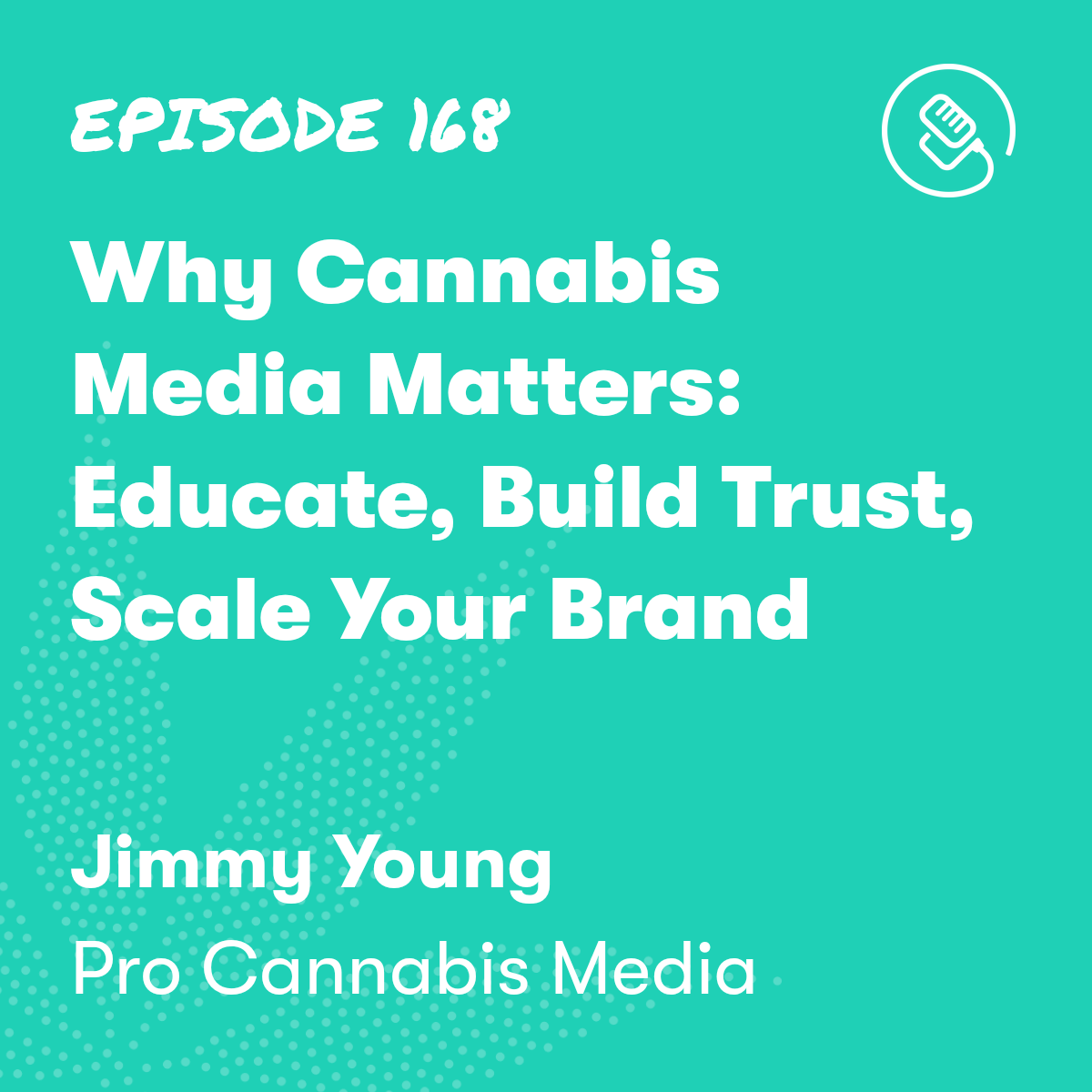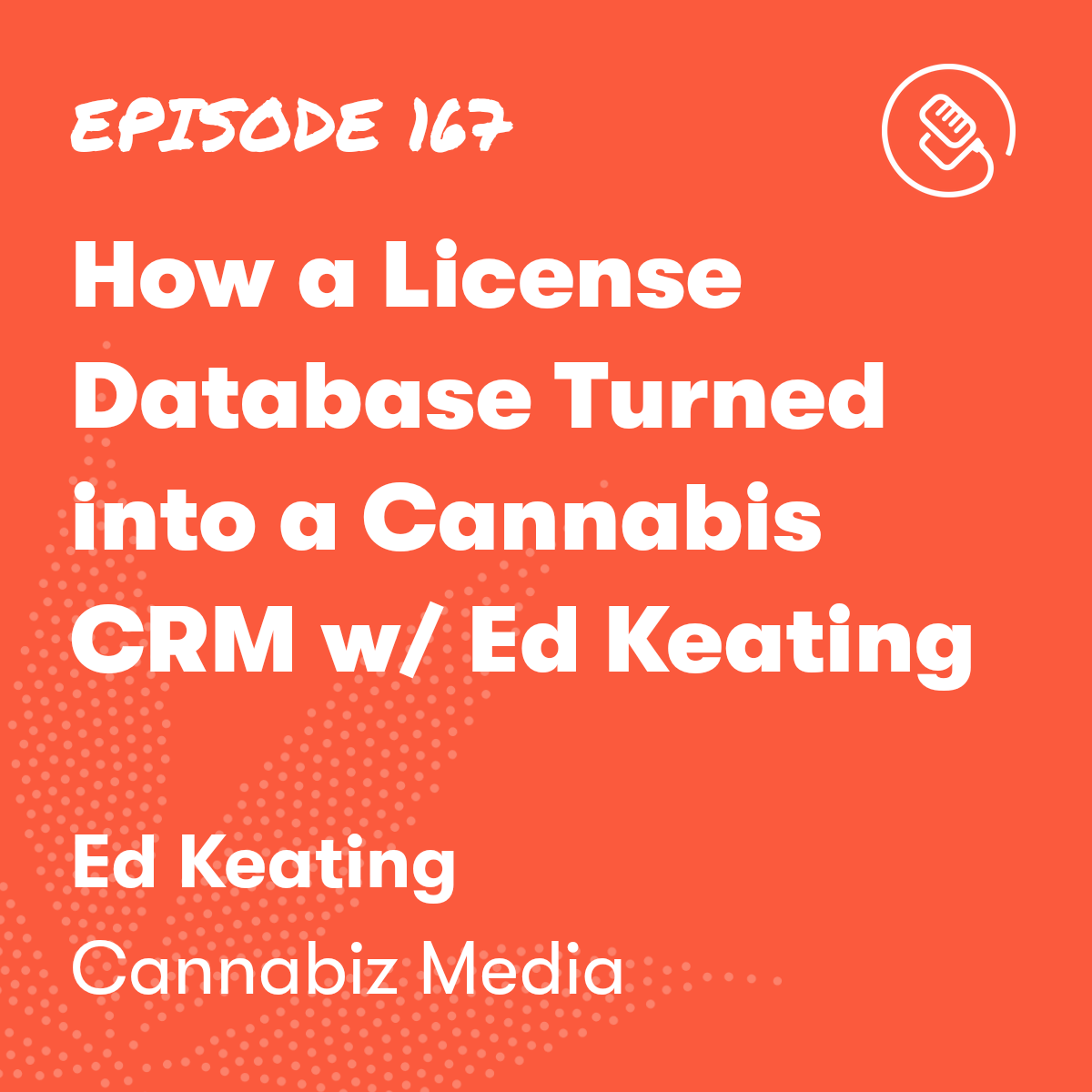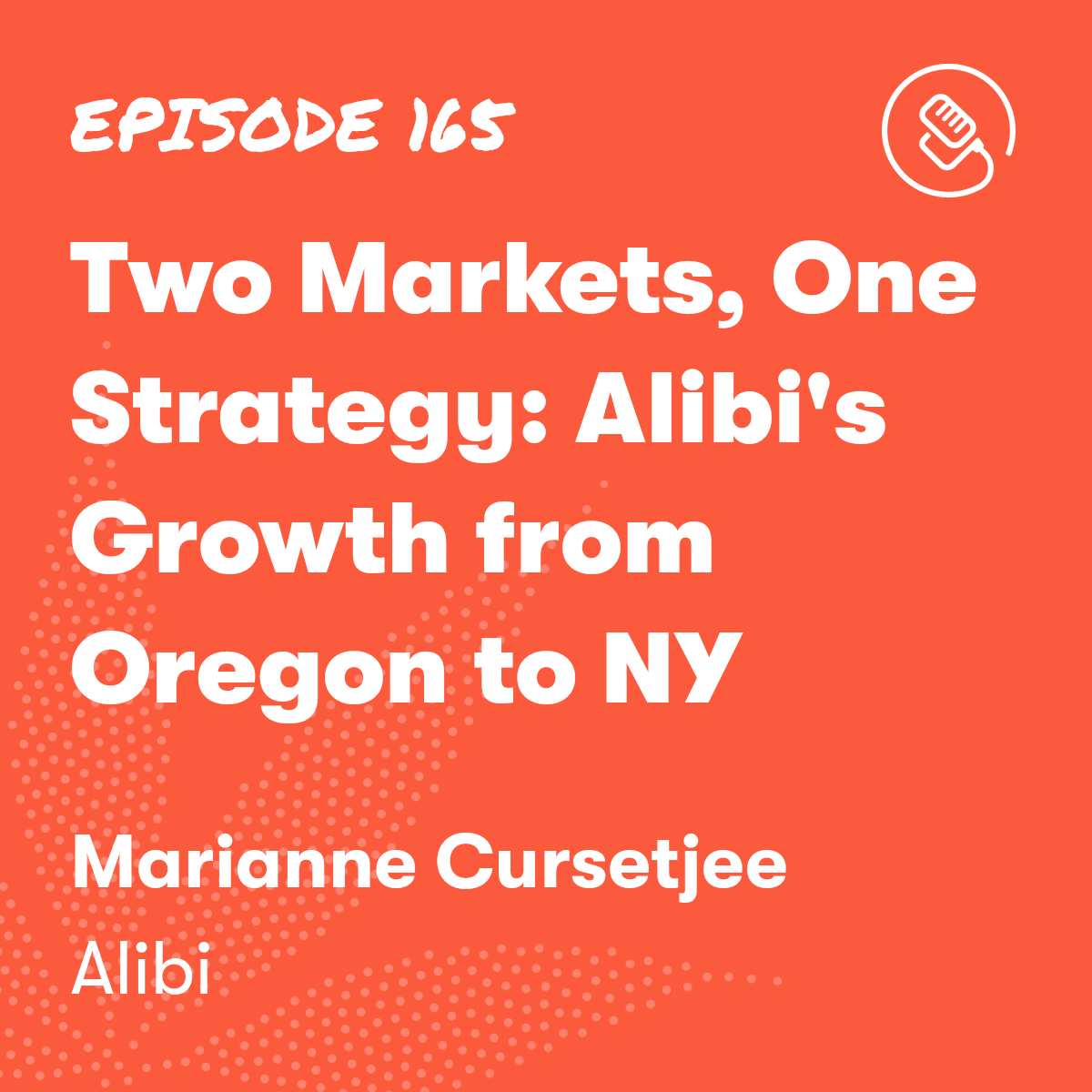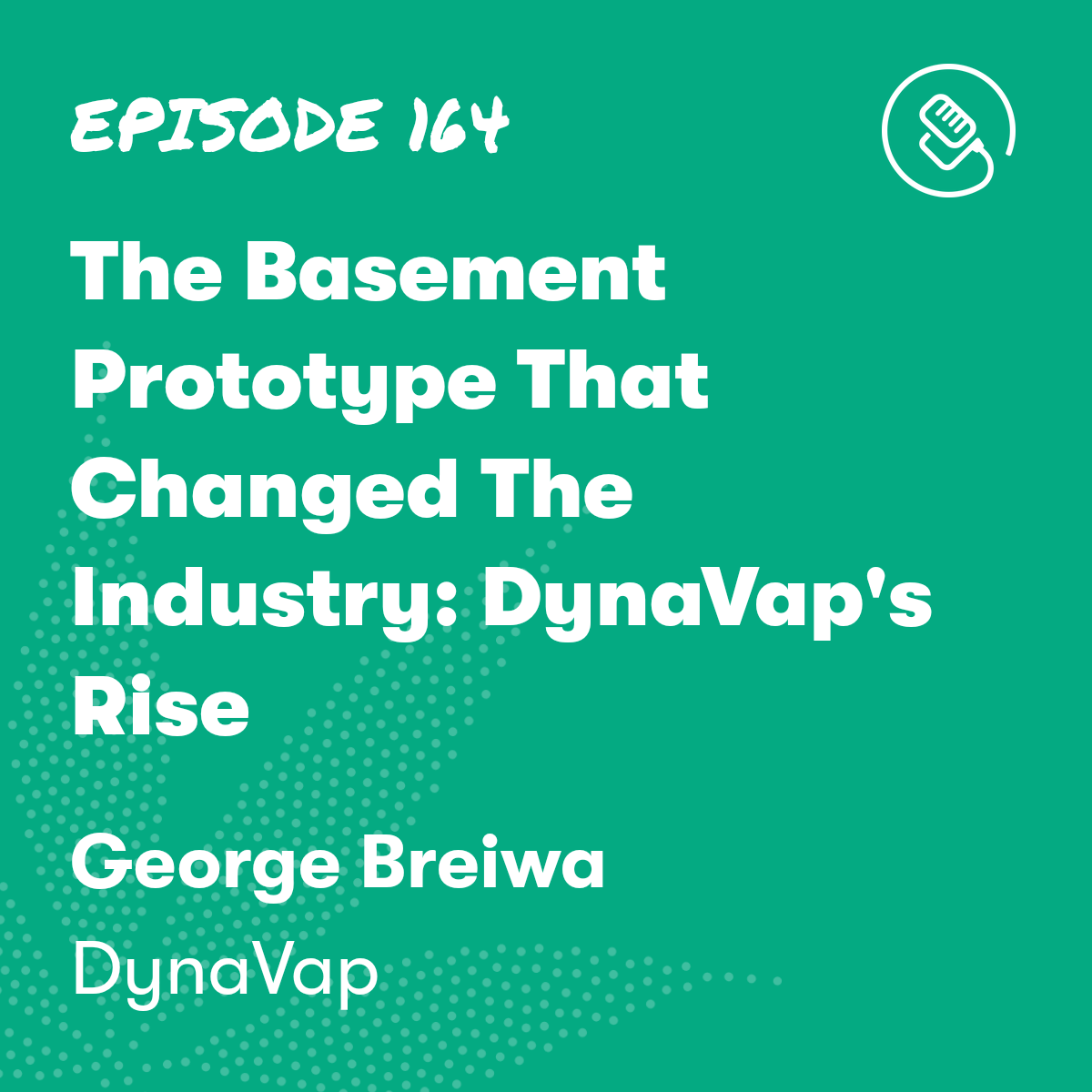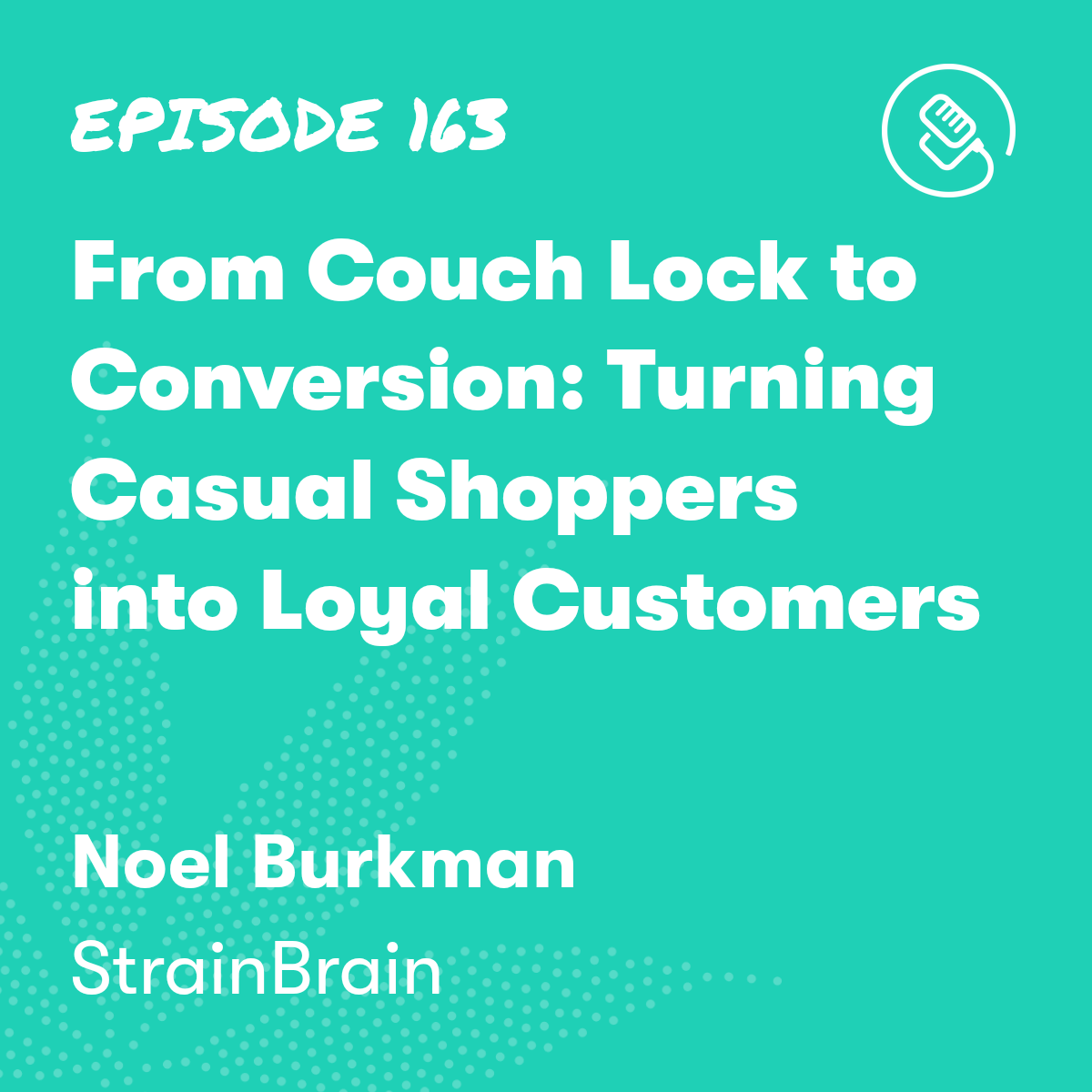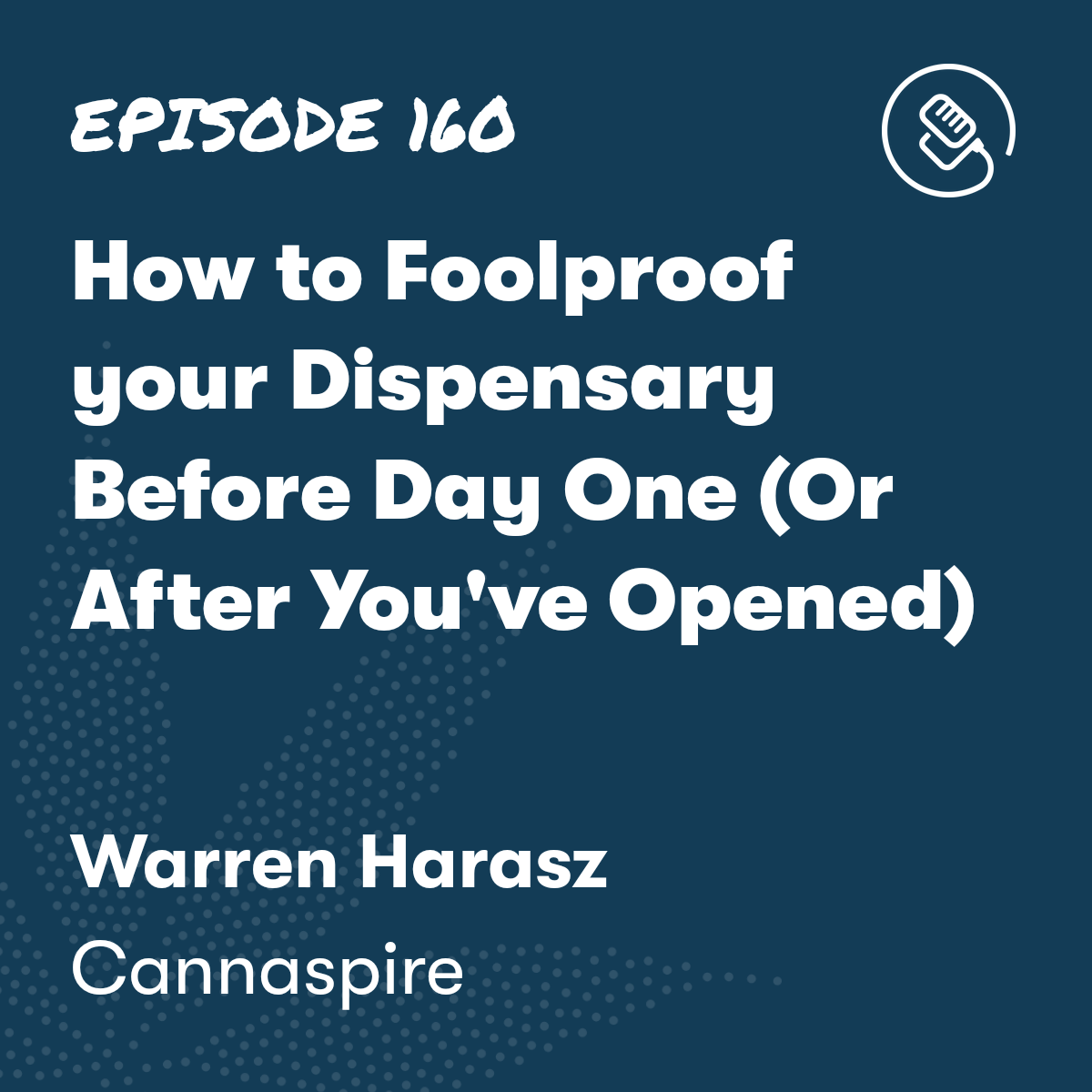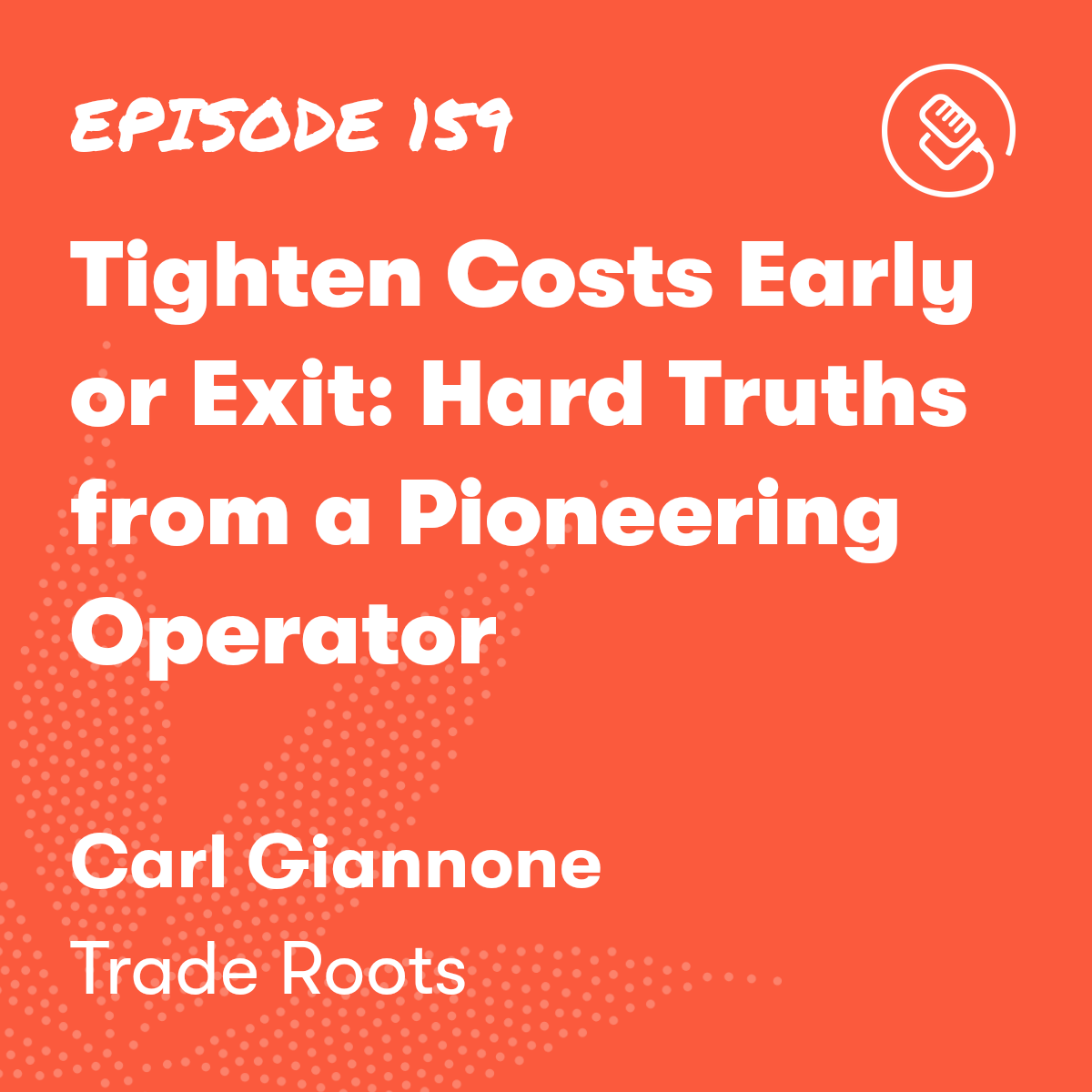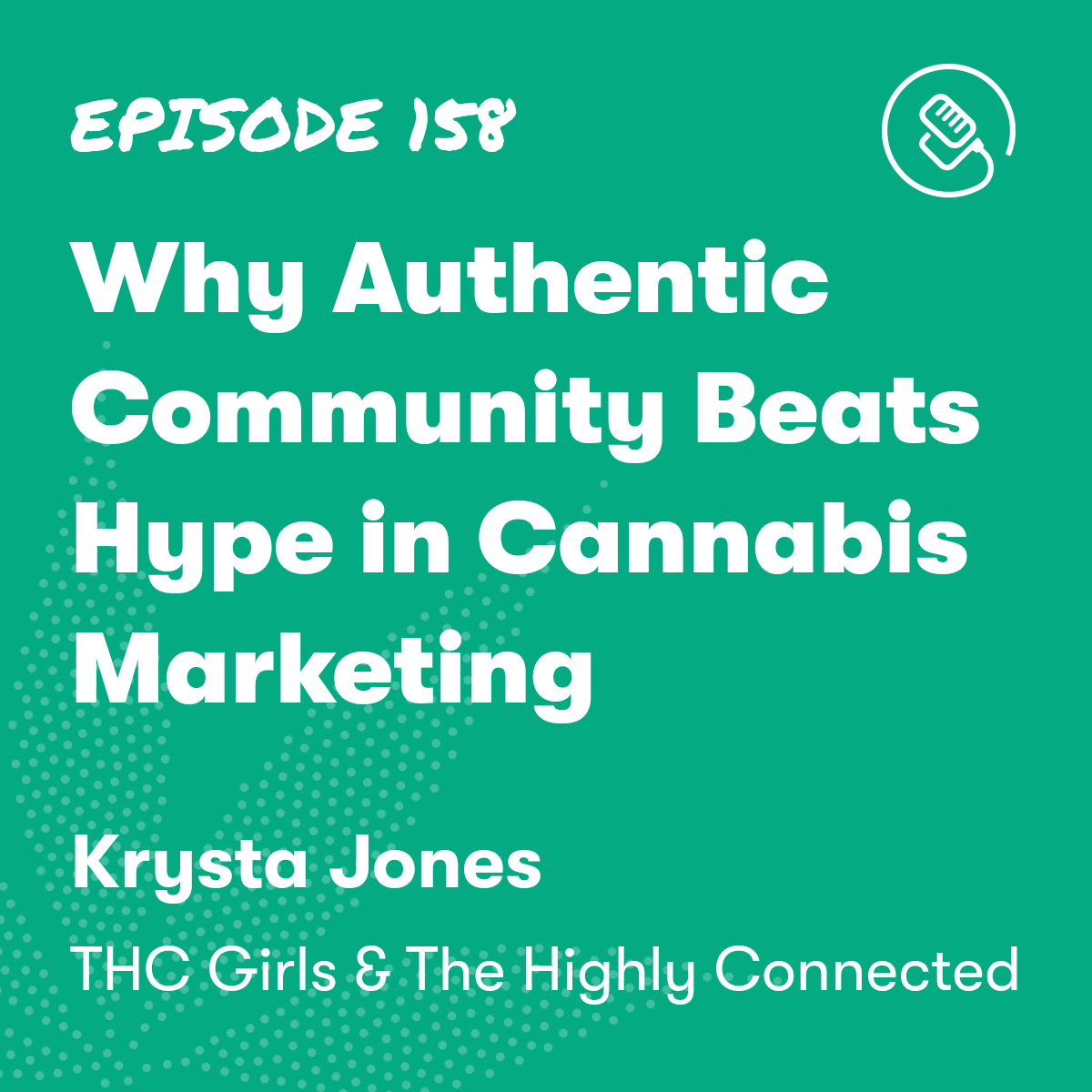

The Power of the Data-Driven Dispensary with Treez
Episode Description

Episode Transcript
Welcome to the KayaCast, the podcast for cannabis businesses looking to launch, grow, and scale their operations. Each week, we bring you interviews with industry experts and successful retailers, plus practical tips and strategies to help you succeed in the fast growing cannabis industry.
Tommy: . Thank you, John, for joining us today.
John: Thank you, Tom. You appreciate it. Good to be here. Yeah.
Tommy: I recently had the privilege of demoing the Trees platform and bar none, you guys are the industry leader in data. And I see what everyone says in, in, in terms of how.
Much you help operators make decisions on their business. So I wouldn't mind diving in that today in terms of what data points a retailer should look at in improving their business operations.
John: For sure. Yeah. So our platform retail analytics, which has been live for a little over a year now, we actually debuted it at MJBiz 2022.
It's all about making your retail data accessible in your fingertips so that you can optimize your business, right? A lot of data platforms give you a lot of data, but you're, you then have to use your labor to get to the data point in the KPI that you need to optimize. Retail analytics is basically taking all that data and driving to an actionable KPI.
And the biggest thing I think it affects. For retail operators is Product assortment, inventory management, inventory optimization. Our main KPI, which is actually a tree specific KPI is called sellable velocity. So everyone's probably familiar with sell through rate and sales velocity. Sellable velocity takes it a step further where not only are you measuring how quickly your products are selling, but in cannabis, you sellable location.
And that's a very different measurement than. If it's just part of your inventory, if it's in the back, you want to actually measure how quickly is it selling or not selling if it's on the sales floor, ready to be sold. And that gives a level deeper visibility for the operator and it helps them make much better decisions.
But product assortment is the, probably the key thing that operators are trying to figure out in cannabis, right? We're still in a very New industry with not a lot of standard practices, we're all building together, but RA retail analytics is really meant for retailers to look at their inventory data, what's selling, what's not selling, what do I need to get off the shelf?
If they're, if it's not selling, can I discount it? Do smart discounting, don't discount everything, but maybe the stuff that's not selling and really try to optimize my inventory.
Tommy: Yeah. You made a really good point. An interesting point, sellable velocity. Can you talk a little bit about the differences and the nuances between having inventory in the back and measuring how long you hold inventory to actual sellable inventory?
John: Yeah. In cannabis, which. Maybe it's a little different than traditional retail in this sense, but you have your inventory in the back, you have your inventory that you actually move into a sellable location, right? And so if you're just measuring what's in your inventory, you're only looking at the total pool of inventory that can be sold, but if you're looking at actually the inventory that is on the floor, ready to be sold, then you get that level deeper of okay, if that, if I can get my sellable velocity quicker, then I can actually affect all my inventory in the back. I can get it to the point where I'm going through my inventory quicker if I can see what's selling and what's not selling in the sellable location. If I'm just looking at what's in the back, you're looking at a very long elongated view on what is selling and what's not selling.
You want to be able to look at what I can actually sell. And until it's moved to that sellable location, you're not effectively looking at your real pool of sellable inventory. And that's, that measurement is really key for operators. Regardless of that nomenclature, Just having the data to see what's selling and not selling and how to optimize off of that, how to price differently, how to discount differently.
These are all the things that retail analytics allows you to do. So
Tommy: how would somebody use? Sellable velocity to impact sales or impact their cash conversion cycle.
John: Yeah. So simply by looking at what products and what their sellable velocity is, how quickly are they selling? You could say, I need to restock on this flower or this gummy or this product.
Very soon. I could see how quickly it's going to sell out. Okay. If I'm looking at a product that has a very long sellable velocity or sales cycle, then I know I need to get it off the shelf quicker. So I need to do some smart things by doing that. You're. You're optimizing, your current inventory, but it also allows you to say these products are not really selling at the velocity I need them to sell.
So maybe I won't buy as much, maybe I won't buy at all. But these are the products that are consistently selling my top items and I need them to be in stock at all times. I need to be in a sellable location at all times. And if you're only, again, looking at your total pool of inventory, then you're not really optimizing for your shelf space.
You're only optimizing for your total pool of inventory. And that really is important for cash flow, right? If you need to get the products in and out, right? And it's a very systemic way of doing things. But it's it helps optimize your cashflow, your inventory, your revenue, your sales cycles and all your processes, right?
Right now, retailers are probably spending countless hours just trying to get to some measurable data point of how their inventory is selling and how to optimize it.
Tommy: Yeah, you made a really good point. It's. Inventory that's on the floor, which shelf is limited? Yes,
John: exactly.
Tommy: Yeah. So you don't have that much shelving space.
How do you know which inventory to hold?
John: That's right. And that, that, that's the data that you get in RA is you can see exactly which products are the ones that you should consistently keep on your shelves. You're always going to want to experiment with different products, new products. But if you can get to that point where you're measuring effectively, we've seen retailers.
prior to using sellable velocity, we're essentially missing out on a huge revenue potential by not keeping certain products in stock, right? Because they're only measuring on total inventory, not sellable velocity, not their shelf space. So if you look at it just from a shelf space perspective, then you can optimize and say.
I need to continuously run through these cycles of my inventory and always have product available ready to put on that shelf because it continues to turn over. And if I don't do that, if I don't do that, I lose out on all that revenue.
Tommy: Yeah, you probably have the data. Do you have the data in terms of like quantifiable?
Dollar terms, what you've seen retailers hold an inventory or sell before using Sellable Velocity.
John: So we did a pre post analysis when we first launched Sellable Velocity, when we first launched Retail Analytics. And, we've seen retailers. On average, lose about 20, 000 in lost sales a week.
Wow. Just by not having that data point, by not using that data. And conversely, by using it, can recoup or generate 20, 000 more in sales a week. By using that data point.
Tommy: Wow.
John: That's too huge. It's significant. And I think that's the more we can use data. As you and I both know, and as many people know, data is paramount.
So the more you can actually use data to inform your business decisions, the better your operation should run. It's not as simple as that. There are people behind that, it's key.
Tommy: Let's talk about that a little bit. I. Our listeners are very keen on how do we operate more effectively.
And we always have the saying, there's really only two ways for you to increase sales. You increase, you can increase the number of customers you serve, or you can increase the transaction size. So how do, how should somebody leverage data to increase sales in their business?
John: There's a lot of tenants to that.
I think. We look at both, but we certainly look at average order value and transaction size a lot, right? We have a payment solution, TreesPay which many of our customers use and have adopted. And the more we can get customers to adopt cashless payments, the higher the average order value, just, on average, typical retail environment.
So if you're using something like ACH, or you're paying with a card, on average, you're going to spend, 25 to 40 percent more than if you just use cash. So our retailers are seeing pretty good success by incentivizing that, right? Saying, Hey, if you use your card today. We'll give you a discount or we'll give you some type of loyalty reward for that.
So the trade off is the customer gets, some discount or something off of their payment or some reward for future payment. And the retailer stands to gain more in sheer transaction volume. And that's just the basic. Initial stuff that retailers can do to get their transaction, average transaction size up, average order value up.
I think figuring out how to get more customers and building in the loyalty aspect is an, is another part of that. And we're constantly communicating with customers and partners on how to do that. We don't sell a loyalty solution, but we have partners that do that. And I think that's a really key component too, but payments is, a huge factor in cannabis.
It's something that's a pain point in general, right? Because you can't just accept any type of payment. But those that, that do, and we're seeing some really good traction with our ACH solution called Swifter is if you're able to get your customers to pay more with cashless payments, your revenue on average per month will shoot up roughly 20 to 25%.
That's huge, right? And the more we can get our retailers retailers at large to, to push those solutions, the more they stand to gain and the better the consumer experience as well. Are used to paying with their car, used to not paying with cash. So I think meeting them where they are is a really good experience for them and should help with increasing revenue for the retailer.
Tommy: It's funny that you say that cause it's, we take cashless payments for granted in other industries. And it's not until cashless payments becomes an issue that you realize how important it is and you hit the nail on the head on average. People pay, people buy more if it's on a card. Why is it so hard in our industry to get payments
John: correct?
It's federally illegal, right? To accept just regular credit card payments. With, we're hoping with some new legislation that's on the table that will change, but the reality is it's just not accepted at the federal level. So retailers. I think have some, reasonable risk on why they're not accepting payments or why they're pushing cash.
But the reality is there's a lot of inherent security risk by just accepting cash. What we're working on at TREES is providing the ability for redundancy at scale for cannabis retailers. So if there's any issue with. You can use your ability to accept one form of payment or use one specific backend to accept that payment that we can easily board you to another solution that accepts that same payment.
It's something, we call TreesPay 2. 0 which we actually highlighted at the MJBiz. So this year, and it's really important, right? We have the first part of that is a master application so that retailers can fill out one payment processing application, one time. And on the backend, we're working with all the different processors and solutions so that they get approved and accepted on all these different types of payment providers.
That's step one. Step two is on the back end, like I mentioned before, if for whatever reason they're unable to accept a certain type of payment or use a certain type of provider, behind that is a second provider that is ready and willing to step in. And accept that form of payment. And it's a really, meant to be a really seamless backend solution so that the consumer and the retailer never even have to see that happening.
Oh, wow. But it's important in a space like cannabis, right? Because redundancy is paramount, right? The thing we always. Come back to is while we're in, in the current state that we're in at the federal level, we want to provide the opportunity for our customers to accept cashless payments, no matter what we don't want them to ever have to worry about losing the ability to accept cashless payments.
And that's our. Our mission or goal, so to speak for our TreesPay product is providing that opportunity.
Tommy: So if I were to go to a Trees merchant and I paid my debit card and that transaction didn't go through, how soon am I able to use my card again?
John: So in the future this is something we're building towards.
It's not available today, but in the very near future, hopefully early next year. It should be a very seamless process, right? So that the consumer, again, tries to use their card. If for whatever reason, the first solution is not working on the back end, the next solution picks it up and that card gets processed, right?
That's, that happens in other industries, by the way, as well. For whatever reason now we have to have fail safes and security to make sure that it's a legitimate transaction, that the transaction should go through. There's no fraud or risk or anything like that. And we were creating all those fail safes but for the merchant, they should never have to worry about having their payments not available.
That's
Tommy: amazing. That's, I, it. It's always an operator's nightmare if something goes wrong on 420 or the busiest times during the year. So this is a really good safety net to have.
John: That's right. Yep. And it would be huge for, again, cannabis payments is something that everyone should have access to.
Tommy: What other data points should an operator pay attention to when managing their business?
John: So I think if I look at the entirety of a retail operation, there's the front end and the back end, right? So on the back end, you're looking at inventory management, product assortment labor costs on managing all of that.
On the front end, you're looking at your front of house staff, right? So your bud tenders, your sales associates. And optimizing, their performance or their their labor, and making sure that they can balance the role of a bud tender, which is to provide really good education for the consumer.
And the ability to cross sell and upsell different products, right? The typical kind of sales associate role. So that data is very important as well, to see how, which bartenders are performing. What can they do to improve their performance? How can we educate them on all the products that are being sold so that they can educate the consumers?
There's a lot of different tenants to that. There are specific dashboards within retail analytics that actually show you all of this as well. And so that if you're a GM or a manager you could see all of that data and you can work with your staff. I think it's really important also to understand where sales are coming from, whether it's offline, online, e commerce, delivery and, understand your consumer base and where they're buying and optimize for that as well.
And, this is probably where maybe your solution, Kaya, also crosses over with the trees, which is. The, just the sheer labor to sales data that typical retailers will look at to say, when are my really busy times? When are my not so busy times? And how do I make sure I staff up when appropriate and I staff down when I don't necessarily need all everyone in the store?
. Those data points we constantly hear. From customers that's what they look at. That's what they need. They need the sales data and all the really important data points that retail analytics gives you, and the need to tie that data to other platforms, other systems that have.
John: Other data points, ERP solutions, business intelligence solutions workforce management solutions, what have you. And to tie all those systems together is becoming really important. And that's also part of what we've been focusing on in the last, three to six months is how do we tie all those systems together?
How do we take our data and make sure, it can integrate and. Play well with whatever other tools retailers are using,
Tommy: What decisions can be made by knowing where sales come from online delivery in store.
John: By knowing that you could definitely look at how do I, how do we get more e commerce sales?
How do we get, how do I optimize my marketing spend as well? If I'm seeing. A lot of my sales that are coming from in store, then I'm going to want to focus a lot of my attention on generating as much revenue from the in store experience as possible. If I'm seeing that e commerce is working well then I want to make sure that, I have a really top of the line e commerce experience so that I can get the most out of that.
Make sure my, my products are ready to be sold on e commerce at all times. But most importantly, I think it's just understanding where your customers specifically like to purchase. And there's a lot of nuances by market, by geo, by store. That, that gives you that, that insight. We have customers who 70 percent of their sales are online in store e commerce.
In store pickup. And then we have the inverse on many other customers where it's mostly in store. So I think it's just a matter of how do we make sure that the experience is optimized for where your customers want to buy. And making sure that your marketing strategy and your budgeting align with that.
Tommy: How can somebody leverage data to improve? I should re rephrase that. How can somebody leverage data to improve, but how can somebody leverage data to improve butt tender performance?
John: Yeah. So this ties back to, many different things on the payment side we've seen customers who work with their butt tenders on how to upsell or cross sell different products and how to.
incentivize different types of payments, right? So in, in our data platform, you can see which bartenders are selling the most, which bartenders are performing. The best as it relates to, to different types of payment options. And by using that and knowing that average order value goes up, the more you use cashless, you can work with the different bud tenders on how to improve their ability to push for cashless payments to the consumer, right?
And there's different incentivizations. For the consumer that you can create, there's different incentivizations for the butt tender you can create. But it all comes down to how are they performing relative to their peers in the store and how to make sure that. You could work to educate and optimize the performance of those who maybe have more ground to cover and can improve so that they're performing the best for you as a, as an employee.
And then seeing which ones are performing best, you could figure out what are they doing differently that leads them to perform best, right? And so this is a little bit of an art and a science. It's not going to be, I see the data. And I know exactly what they're doing. You're going to have to understand and work with those top performing bartenders to say how, what do you do differently?
That's pushing payments or pushing more sales or generating more revenue when you're working versus the average employee. And I think that balance between art and science is where you're going to find some green field to say, hey, these 5 buttenders, if you do these 3 to 5 things, you're going to generate more sales.
You're going to make more money. The company's going to make more money. The consumer is going to be happier. They're going to have a better experience. So let's figure out what those things are. Yeah.
Tommy: You hit the nail on the head. We always tell our operators when you're looking at data and a particular, but tender sales data it's always also nice to see who the outliers are, if you have a button or that's selling every single SKU, what is he or she doing?
Like how did, how do, what are they doing to. Upkeep their inventory knowledge to be able to do that versus a butt tender that's only selling the top two things that they're familiar with.
John: And it's it's a very difficult thing to, it's easy in theory, but very difficult in practice because not everybody could be really good.
at understanding and selling all these different SKUs, right? So another thing we typically will work with customers on is SKU count, right? Because it's really hard as a budtender or sales associate to be able to recommend specific products. Because you need to learn so much about so many of them, right?
And some butt tenders are really good at that, some are not. One of the things we work with customers on is try to have as limited of a SKU count as you can to work with, right? And then start to test up. With additional SKUs, because we see customers with thousands and thousands of SKUs, and if you're an average consumer, you walk into that dispensary.
You have no idea what to buy. And the butt tender has no idea what to recommend. That's a really terrible customer experience. So you want your butt tenders to know enough about the products, but also as a GM or an inventory manager as an owner and operator, you need to be very intentional on how many SKUs you carry so that it's the best customer experience.
Awesome.
Tommy: You made a really good point. So as an operator, how can I leverage data to determine if I'm optimized with the SKUs that I have? How do I know that I have too
John: many? It's not as simple as that. This is, again, an art and science thing. There are books that'll tell you, carry a hundred SKUs, carry 50 SKUs.
There are consultants who will tell you, I, I've seen it work at 500. It's different per industry. There's no I think one specific standard we typically tell customers 300 or less is probably The average you should carry, right? The higher you get, the, just the harder it is, but some dispensaries want that brand.
They want to carry everything, and they want their consumers to know them for being that retailer. So it's a little bit of that at play as well, but from a pure data perspective, it goes back to what's selling and what's not right. That there are going to be certain brands.
Certain products that are going to fly off the shelf regardless, right? Those are always the ones you're going to want to keep in stock. And then there are going to be the ones that. Are maybe not as well known or not as well adopted that you're going to want as maybe your second tier brands.
And then everything else is something you should test with. We have customers like Embark who have 85 percent of their inventory, roughly standard every, in every location, it's the same products, no matter what, and then they play around with the other 15%, right? And so that limits their SKU count.
It optimizes their product mix. It keeps things really tight. And it also plays with what they're trying to be, which is a kind of an exclusive type of brand. But that's not for everybody, but there is a, there is opportunities to use that data, the inventory data we talked about earlier. So as a starting point, at least to say, these are the minimum amount of brands and SKUs I should carry.
Tommy: How does somebody, and I would imagine running a dispensary inventory management is, it's everything. At the end of the day, people are exchanging money for your inventory. What other what other data points that we haven't spoken about that retailers should really think about when managing their inventory?
John: I think, profit margin and what we call gross profit versus just pure gross margin. I think if you can get to a point where you're measuring your average order profit, not just average order value, but the profit you're gaining on every order, that becomes really important. And, we're, there are only a handful of probably customers that can do this really well today.
But the ones that do, I mentioned Embark, they're one of them. That's their whole business model is predicated on profit, right? So we talked a lot about sales, transaction volume, average order value, revenue. But in the end, profit is key, right? Revenue growth and limiting costs out the door expenses are two ways you grow your profit.
And if, but if you're not measuring that, and if you're not measuring that on an inventory basis or an order basis, that it's really hard to get there. And, our goal for next year at Trees is to help retailers become profitable. So we think the path there is to save on labor costs and use a platform like Trees to help you do that.
And all the data that it gives you and also grow your revenue to help you grow and maintain that profit. But in order to get there, you have to measure it. So when I look at key data points that, that retailers and operators should look at, it's measuring the profit. From your inventory, not just the sell through, not just the the different products that you're selling or not selling.
It's the profit margin. We just came off Green Wednesday. And I think it's really important when we look at a holiday like Green Wednesday to really understand what's happening and our data shows something a little bit different than I think what you see out there in the public realm, which is that yes, Green Wednesday is a huge.
Sales day, right? But when you actually look at week over week analysis, pre and post, you'll start to see that the total sales volume is not that different week over week. Because what ends up happening is consumers will take Green Wednesday and Black Friday specifically and stock up on those two days because it's a long holiday weekend.
And they'll have that that product to use for the entire weekend versus what they probably normally do, which is I'll go on Friday and maybe I'll go on Saturday or I'll go on Saturday, maybe I'll go on Sunday and I'll buy on different days, they buy in bulk, right? And so they use those two days to buy in bulk.
What ends up happening though, is retailers. Will over discount and say, I want to generate so much revenue on these two days 'cause I know people are gonna be buying and stocking up that I'm gonna discount heavily. And what ends up happening is you look at the week over week analysis and sales jump a little bit margins.
Go down much, much in a much more dramatic way. And that's, if you're a retailer, you don't want that, right? You want to discount because you want to take advantage of people stocking up, but you don't want to over discount. You want to be intentional when you're discounting. And so we've, through our customer success team, through our relationships with our customers, we're trying to tell a different story for that specific holiday to say, think about what you're discounting, how you're discounting.
Figure out what to discount. Maybe you incentivize or discount if you use a cashless payment solution because they're going to buy more. Maybe you discount items that you're hard. It's hard to get off the shelf. But I was in dispensaries in New Jersey all day on Green Wednesday, and there's a storewide discount 20 to 30 percent off on every product.
And I think that's just not necessary. So there's a lot of data and a lot of applications of the data. That can be used, but aren't necessarily used. And we're hoping going into next year that becomes more and more the norm, and we're certainly working hard with our customers to, to make that happen.
Tommy: When, and I see this often running one location is vastly different than running two, three, four locations. What changes with the data that an operator should look at when managing multiple
John: stores? It's a great question. I think when you have multiple locations, you have a lot more data which is a good thing, but I think overall, you still need to zero in on the two to three data points that are going to move your business the most.
At least if you're at the operator owner level or the GM level. And you're trying to maintain, a certain level of performance across all of your stores, right? Which as a multi location or multi store operator, you should be looking at the totality. And I think it's probably easiest to say I want to look at all the data everywhere, but you want some top line data on how your business is performing across all the locations.
And then you want to be able to drill down and have your GMs drill down into the specific location. So I think it's not just what data you look at, it's how the structure of your data architecture within your internal teams. Is laid out, right? So that you're looking at exactly what you need to look at, right?
If you have a 20 location operation that you're very much in tune with how much you're selling what profit margins are you maintaining? Overall, what's your discounts? What does that look like? But just a much more hierarchical view. And then if you're able to have GMs. That cover one or more locations themselves that they start to drill down into their actual stores performance.
And the data platform that you use, whether it's trees and retail analytics or something else needs to be able to give you that visibility. That's the key more than anything is you get that visibility and you see exactly. How the entire organization is working and how each individual shop is working.
Tommy: We always ask our clients, what's data is really important to you. And what is the work that you have to do to get that data? And that's the work that you have to do to get the data is insightful because if there's work, there's dependencies and oftentimes it's not being looked at as often as as they should.
John: Oh, yeah. The work that some retailers
have to use to get to a data point is just as important as the data itself. The labor cost alone that you're spending to find specific data that moves your business. Is huge in some instances. And so again that's where the accessibility and the visibility is really important.
You can't afford that. Yeah.
Tommy: We have a saying if it takes a lot of work to get the data, oftentimes you don't get the data. Just happens in the business, right? Tree. You guys announced something that was a revolutionary in the industry at MJBiz. Can you talk a little bit about more about product catalog with metric?
John: Yeah, this is probably the most exciting. Announcement we've made since I've joined in the two years I've been here. But it's really revolutionary, like you said. And it's, industry industry, it's innovative on an industry level. Maybe I can start over on that. Yeah.
Start over. So it's really exciting. This announcement it's industry shaping in our eyes. And it's probably the thing that we hear the most from our retail customers is the lack of sophistication in creating products and maintaining products is really challenging, and it comes down to two main things. One is like we've touched on a few times. Retailers are using their own labor, right? Often to create these products in their system. And that means hours and hours of finding the right product image, right product description, right information so that their consumers can see that on their e commerce site, or even when they're in store.
And so that their bartenders know that information and can talk about it as well. So it takes up a huge amount of time. And by not having the right product information, there's no set standard in the space today, right? So if you're on a dispensary website, chances are, depending on who the platform is that's being used.
You're not going to have the right product image, the right product description. So as a consumer, you lose trust and perhaps you're not, you don't have the information you need to make a purchase. So those two components alone are really impactful to a dispensary's operation. And so we've been working on this.
In practice and in, strategy sessions in theory for years, as have others, right? And I think now for the first time, we have a really committed strategic partnership between Trees and Metric that are focused on solving this problem, right? And Metric is a really important piece to all of this because they're the starting point for all product information, right?
That's where brands and manufacturers are going to create their products first. In the metrics, metric platform. So by having a widget powered by trees inside of metric to guide and capture all the product information within metric, and then have that information flow through the trees POS for those that are using trees.
for their retail operation. That's the first time that's ever happened. And if you're a retailer, that's really important. If you're a brand, that's really important, right? You as a brand today have no real way to ensure that your product information is streamlined and working. And looking exactly how it should, reading exactly how it should.
So you have less control and it's your brand. If you're a retailer, you don't have access that you need to all of the accurate verified catalog or product information from these brands. So by streamlining that entire process. It gives brands the ability to control their products and make sure that it's displayed and, shown accurately and well.
And if you're a retailer, you're going to have a much more streamlined, sophisticated process to making sure that those products are accurate. And that you too can save your labor so you don't have to do that. And that your consumers that are on your website or in your store are going to have all the accurate Product information so that they can make an informed decision.
And by doing that, you're going to increase your sales. So that's, this is to me, groundbreaking. And it's really important, I think for the entire industry, not just for trees or metric, but for the industry at large. To have this process, be fixed.
Tommy: Yeah. I'm how I can imagine how much time it takes a retailer to do this process manually.
Hours. What, okay. First, when when is this going to be launched?
John: So the hope and the goal is that we will have. An MVP first version sometime in the first half of next year.
Tommy: And how can retailers sign up for it?
John: So the easiest way is to come directly to trees or come through metric to trees either way.
But we're encouraging retailers and brands. And really anyone in the industry to talk to us, get more information on what we're building and not only get more information, but help us understand what you need us to build. We're not under the assumption that we have all the answers we want to understand from retailers, from brands, from other providers from metric.
What exactly does the industry need? And we have our point of view and we have, what we're planning to build, but we need inputs. We need feedback. We want to show, retailers and brands, what our thoughts are. And we want to hear from them and we want all of us to help build the right thing from the start.
Tommy: Yeah. That's a unique opportunity. Guys, there's a unique opportunity today that you can be a part of the product development. Of what this looks like, which not a lot of people understand how unique that is. Oftentimes when you see a product it's there. You have no input or say in how it's being built, but there is an opportunity today to really have your voice heard.
John: A hundred percent. Yeah. And we want to hear from as many people as we can. The key to us is making this. As streamlined and less challenging as possible for everyone in the industry and the more input and information we get from others on that the better product we can build. But the fact that we and metric together are committing to this.
Is a huge step forward.
Tommy: John, I know that we're almost out of time. Is there anything else that we should cover in regards to this or data?
John: I think, when we think of next year, when we think of 2024, the year ahead and the future of this industry. Our goal and our focus here is on helping retailers become profitable.
That's our main objective, right? We know that today's cannabis retail world is very challenging. We know that there are a lot of headwinds. But we're focused on helping retailers save labor, save on all the processes they need to build a sustainable operation, help them grow their revenue and become profitable.
That's number one for us. And there are certain things that I think we all, not just trees, but we all need to work together on. To make that even possible. The catalog is certainly that one piece and that's a huge, there's a huge data component to that. But when you think of being able to run a profitable retail operation, the key is your own data, your own sales data, and the best way you're going to optimize your business is by having the right data at your fingertips.
And that's where we're. We're primarily focused on
Tommy: love it. I am a big proponent. I, my background, I'm a CPA and oftentimes we see entrepreneurs not making the best decision because they don't have the right data and the right data forces you to ask the right questions. And the right questions forces you to spend your time in the right area.
Kudos to you guys for helping businesses march towards sound decisions. Thank
John: you. Appreciate that. Yeah we're all marching together.
Tommy: Thank you so much for your time. And, we should have you back on. As we get closer to launching the catalog with with Metric. And I'm sure that our listeners would love to hear more from you as we reach their milestones.
John: Yeah. I would love to come back. We're excited. Thanks.
Tommy: All right. Thank you so much for that.
Thanks for listening to the KayaCast podcast. We hope you enjoyed the show. Don't forget to subscribe to our podcast in your favorite podcast app, or visit our website to learn more about our guests and to access the full archive of episodes from the show. Join us next time as we continue to explore the world of cannabis and help you grow, launch, and scale your business.
